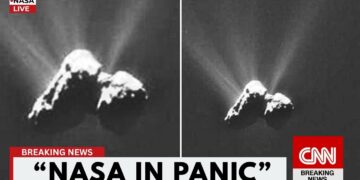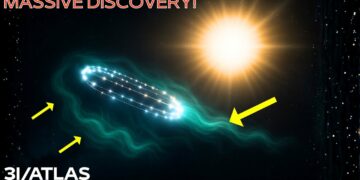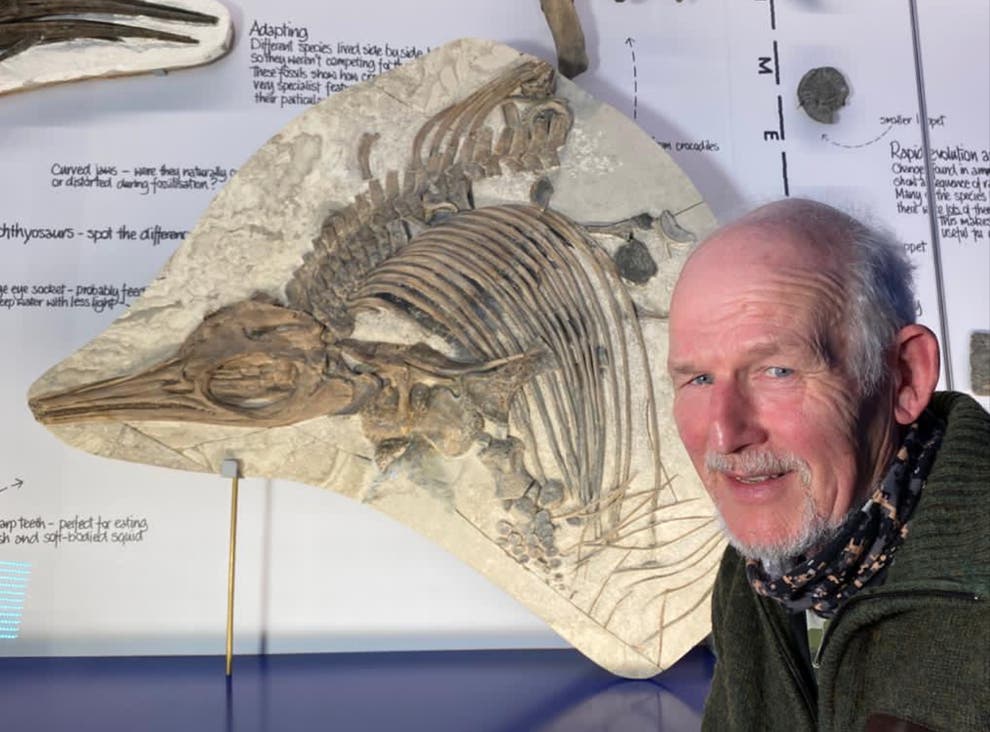A newly released image of 3I/ATLAS has confirmed it is not a comet, leaving researchers worldwide stunned. This enormous object is racing through our solar system at an astonishing speed, glowing brightly and following a precise trajectory that resembles a planned mission rather than the random path of a space rock. Harvard professor Avi Loeb has made bold claims, suggesting this could be alien technology. Is 3I/ATLAS a spacecraft scouting our solar system? Could it be linked to ‘Oumuamua? And are we prepared for what this discovery might mean for humanity?
An Alien Object Racing Toward Earth
The object, named 3I/ATLAS, is hurtling through our solar system at over 130,000 mph—a speed so incredible it could travel from New York to Los Angeles in just over a minute. But its velocity is only the start of its mystery. Within 24 hours of its discovery, NASA confirmed that 3I/ATLAS originated far beyond our solar system, traversing the vast interstellar void where no human spacecraft has ventured. Moving too fast to be captured by the Sun’s gravity, it’s destined to exit back into deep space unless something intentionally slows it down.
What makes this object truly unsettling is its size. Early estimates suggest 3I/ATLAS spans 6 to 9 miles across—comparable to Manhattan Island. Picture a city-sized object streaking across the sky at incomprehensible speeds. Harvard’s Avi Loeb, analyzing the data, proposed a shocking theory: 3I/ATLAS may not be a natural object but humanity’s first encounter with technology from an intelligent alien civilization. If true, this visitor from another star system could have been studying us for millennia, with intentions—peaceful or hostile—unknown.
Defying Physics
When scientists calculated 3I/ATLAS’s size, many thought their instruments had failed. It dwarfs all previous interstellar visitors, including ‘Oumuamua, which was roughly 330–380 feet long, about the size of a football field. In contrast, 3I/ATLAS is hundreds of times larger, resembling a skyscraper next to a pebble. Naturally occurring interstellar objects are typically much smaller, making this object’s scale and integrity across thousands of light-years extraordinary.
Its speed—over three times faster than humanity’s fastest spacecraft, Voyager 1, at 38,000 mph—challenges our understanding of physics. In the emptiness of interstellar space, few natural forces could accelerate a mountain-sized object to such velocities while keeping it intact. Gravitational interactions with stars or black holes might explain it, but the odds of such an object surviving intact are vanishingly small. Unlike comets and asteroids in our solar system, which follow predictable orbits, 3I/ATLAS’s trajectory is unbound, set to escape after its visit unless advanced propulsion intervenes.
A Perfect Flight Path
Astronomers tracking 3I/ATLAS discovered something astonishing: its trajectory is not random but appears meticulously planned, resembling a tour of our solar system’s major planets. On October 2, 2025, it will pass Mars at 17.5 million miles, a close encounter by cosmic standards. It will then approach Earth on December 19 at 167 million miles, followed by Venus at 60 million miles, and Jupiter at 33 million miles. This efficient sequence, visiting four planets in an organized order, has a less than 0.005% chance of occurring randomly—a cosmic coincidence rarer than 1 in 20,000.
The timing of its closest approach to Earth, when it’s on the opposite side of the Sun, hinders detailed observation, almost as if it’s designed to study us while evading scrutiny. This “reconnaissance pattern” suggests an intelligence prioritizing data collection while minimizing detection.
Is It an Alien Spacecraft?
Harvard’s Avi Loeb, a renowned astronomer, argues that 3I/ATLAS’s precise trajectory, massive size, and timely arrival point to an artificial origin. He suggests it could be a reconnaissance probe, designed to study our planets while avoiding close scrutiny. Loeb even posits it might not leave but could use advanced propulsion to enter a stable orbit near Jupiter for long-term observation of humanity. Launched perhaps 8,000 years ago, when humans began developing agriculture and writing, its arrival coincides with our technological advancements, raising questions about whether our progress triggered its mission.
The Dark Forest Hypothesis
Loeb’s theory aligns with the chilling “dark forest hypothesis,” which likens the universe to a dark forest where civilizations stay silent to avoid detection by potentially hostile entities. Broadcasting existence could attract dangerous attention, so advanced species may hide, observing quietly. If 3I/ATLAS is a probe, its creators likely possess technology far beyond ours, possibly including weapons capable of threatening entire worlds. Its journey, beginning 8,000 years ago during humanity’s societal leap, suggests our development may have caught their attention, prompting a closer look.
The ‘Oumuamua Connection
Eight years ago, ‘Oumuamua, the first confirmed interstellar object, baffled scientists. Unlike comets, it lacked a tail and showed unexplained acceleration, defying gravitational predictions. Its shape—either cigar-like or pancake-flat—was unlike any natural object. 3I/ATLAS shares eerie similarities: an unusual trajectory, non-standard behavior, and detection at a time when our technology can just barely study it. ‘Oumuamua, at 330–380 feet, could have been a scout, gathering initial data, while 3I/ATLAS, vastly larger, might be a follow-up mission for detailed analysis, suggesting a coordinated exploration effort.
Scientific Pushback
Not all scientists agree with Loeb. High-resolution images show a faint glow around 3I/ATLAS, resembling a comet’s early tail formation as ice evaporates under solar heat. This supports the idea that it’s a natural object, possibly a comet with reflective ice explaining its brightness. Critics argue that its 167-million-mile distance from Earth is too far for detailed observation if it were a probe. Some propose it’s a fragment of a larger body, broken by a collision or gravitational forces in its distant past, rather than an artificial construct.
A Turning Point in History
Whether natural or artificial, 3I/ATLAS is a scientific milestone. As only the third confirmed interstellar object, it offers a rare glimpse into another star system. Its size and trajectory provide extended observation opportunities, unlike the fleeting ‘Oumuamua or the more familiar Comet Borisov. With months to study it using advanced telescopes like the James Webb, astronomers are mounting a global effort to unravel its mysteries, potentially reshaping our understanding of the cosmos.
Racing to Intercept
The frustration of losing ‘Oumuamua spurred ambitious plans like Project Lyra, initially designed to chase it but now adapted for future interstellar objects like 3I/ATLAS. These missions require revolutionary propulsion, using gravitational slingshots from Venus, Earth, and Jupiter to reach speeds up to 163,000 mph. The European Space Agency’s Comet Interceptor, set for 2029, will wait at Lagrange Point L2 to intercept future visitors during their approach. These efforts ensure humanity is better prepared to study or even confront the next interstellar mystery, whether natural or otherwise.
























